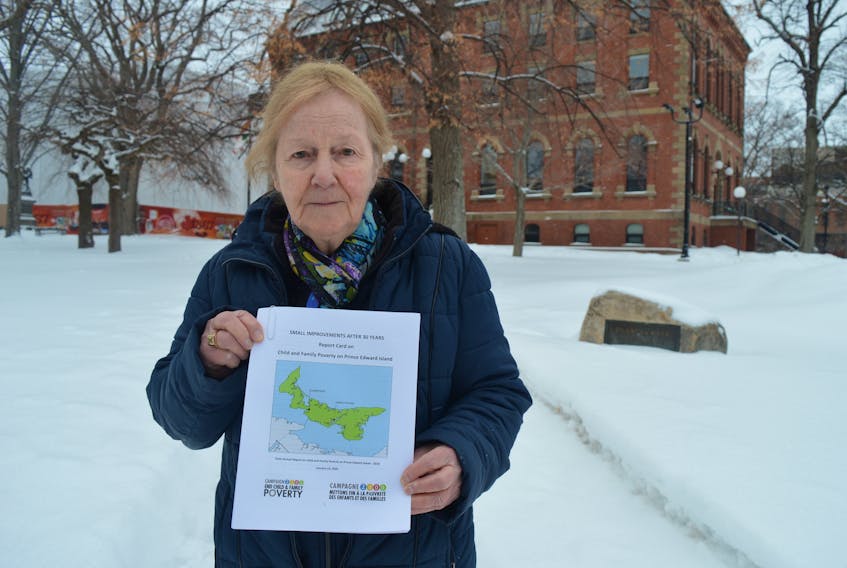CHARLOTTETOWN, P.E.I. — There are fewer children living in poverty in P.E.I., but one activist thinks the numbers aren’t going down fast enough.
The P.E.I. Coalition for a Poverty Eradication Strategy and the MacKillop Centre for Social Justice released their annual child poverty report card Tuesday.
Mary Boyd, the report card’s author, said Canada has seen its poverty rate drop over the years, but the overall number of children living in poverty has gone up because the population has grown.
“That, in itself, has been kind of discouraging,” she said.
Using data from 2017, which Boyd said was the most recent available, the report showed more than 5,300 people younger than 18 were living in poverty in P.E.I.
The province’s child poverty rate of 18.5 per cent was tied with the national rate and the first time since 2001 that it went below 20 per cent.
P.E.I.’s child poverty rate dropped 1.7 per cent from 2016 to 2017.
Overall, P.E.I.’s poverty rate across all age groups was 16.6 per cent in 2017.
The report card attributed the drop to several factors, including a reduction in the unemployment rate, an increase in minimum wage and a stronger economy.
Another factor was the Canada Child Benefit, which went into effect in July 2015 and the report card said lifted 930 children in P.E.I. out of poverty.
Boyd said P.E.I. has fared better than the rest of Canada with the child benefit, but the rate only dropped 1.7 per cent between 2016 and 2017 because of it.
“That’s pretty slow going,” she said.
The report card made 17 recommendations on ways to reduce poverty, including establishing a national pharmacare program, increasing the Canada Child Benefit and implementing a targeted GST credit.
Another recommendation was to implement a “job guarantee”, which Boyd said would be led by the federal government and create jobs in the public sector.
Boyd said those jobs would provide services in society where there are shortages and wouldn’t eliminate the private sector.
They would be decent jobs with good pay and benefits, Boyd said.
“It doesn’t tear away the social safety net, which is so important and which we continually need to strengthen.”
Boyd said the cost of those jobs would be partially offset because it would enhance economic activity and help boost the economy.
Research shows people want to work, Boyd said.
“Nothing’s a silver bullet but this is a very, very effective way to handle it.”
RELATED:










